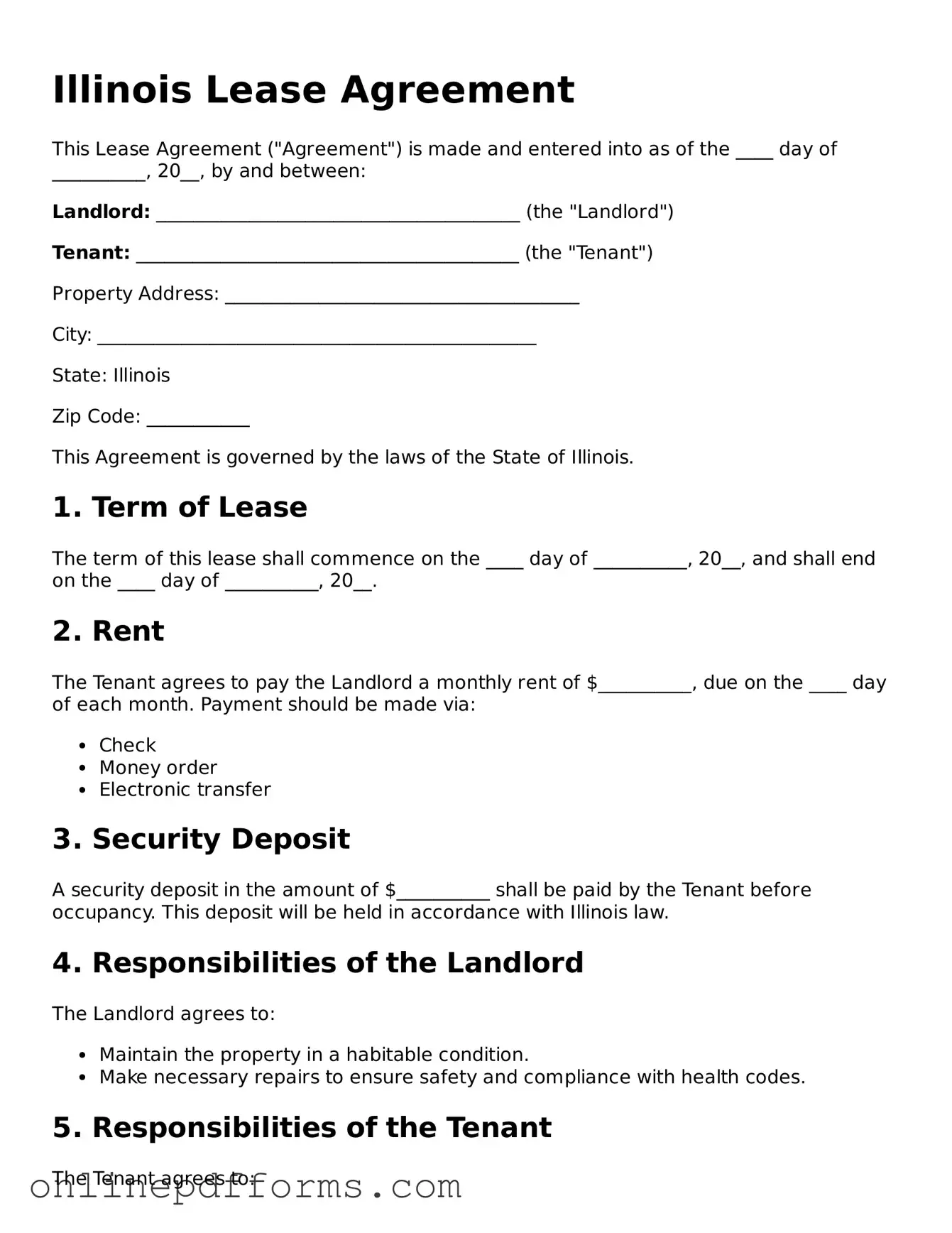The Illinois Lease Agreement form shares similarities with a Rental Agreement. Both documents outline the terms under which a landlord allows a tenant to occupy a property. Key aspects such as the duration of the lease, the amount of rent, and responsibilities for maintenance are typically included in both agreements. While a lease often covers a longer term, such as one year, a rental agreement may be more flexible, allowing for month-to-month arrangements. This flexibility can be beneficial for tenants who may need to move on short notice.
Another document similar to the Illinois Lease Agreement is the Sublease Agreement. A sublease allows a tenant to rent out their leased property to another individual, often with the landlord's consent. Like the lease agreement, it specifies rent, duration, and responsibilities. However, it also includes clauses about the original tenant's obligations to the landlord, ensuring that the primary lease terms are upheld. This type of agreement can provide tenants with a way to mitigate costs if they need to leave before the lease ends.
The Illinois Lease Agreement also resembles a Commercial Lease Agreement. While the former is typically used for residential properties, the latter is designed for business spaces. Both agreements detail the terms of occupancy, including rent, duration, and maintenance responsibilities. However, commercial leases may include additional terms related to business operations, such as permitted uses of the property and modifications to the space. Understanding these differences is crucial for business owners seeking to lease commercial property.
Lastly, the Illinois Lease Agreement is akin to a Month-to-Month Rental Agreement. This type of document allows tenants to occupy a property on a short-term basis, with the lease automatically renewing each month unless terminated by either party. Like the standard lease agreement, it includes rent amounts and responsibilities for repairs. However, it offers greater flexibility, as either party can typically terminate the agreement with proper notice. This can be particularly appealing for those who may not want to commit to a long-term lease.
